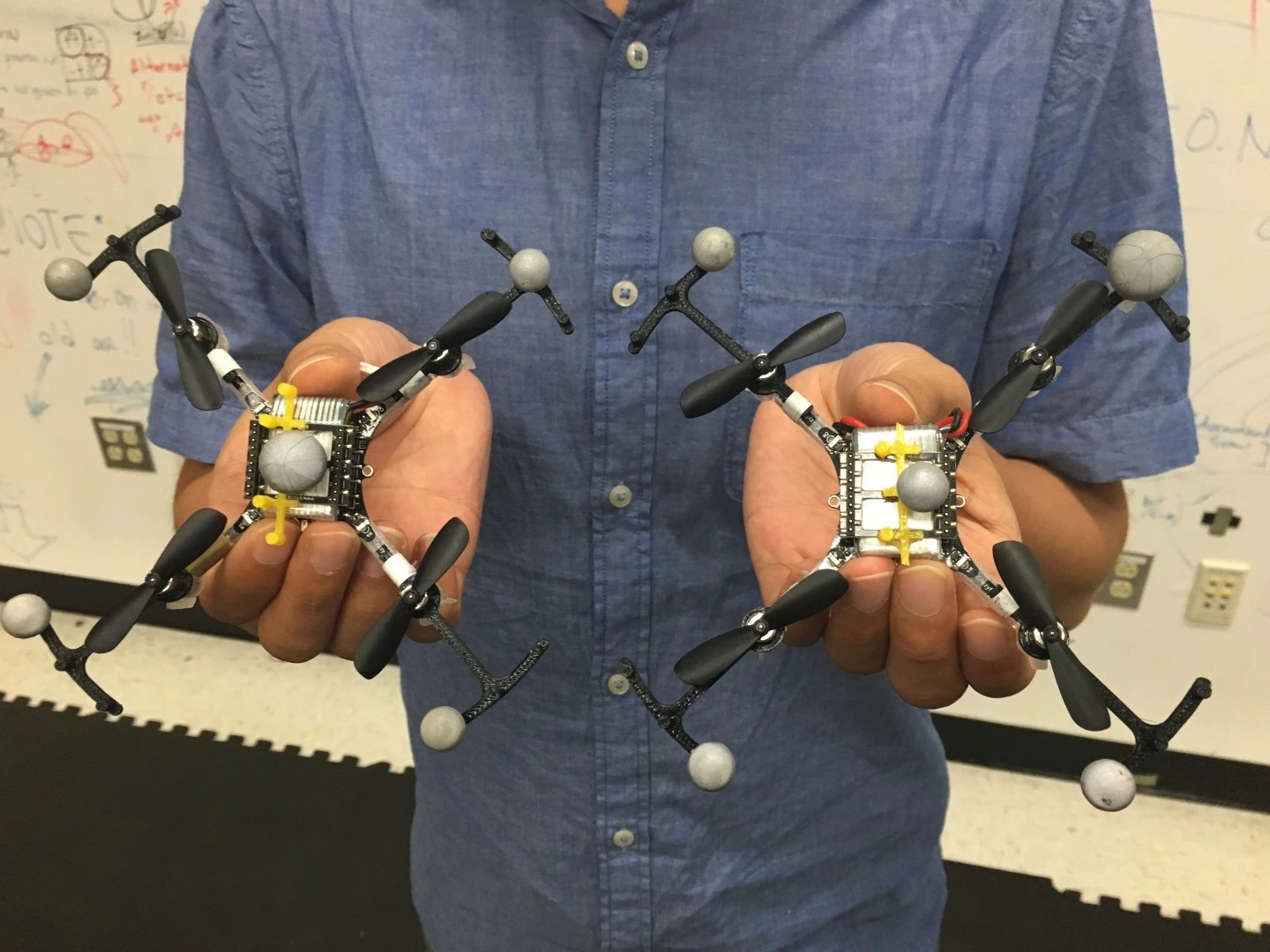As more autonomous aerial vehicles crowd into the airspace, we're going to need some measures to keep them from crashing into each other. Air traffic control networks are in development, but in the meantime researchers at Georgia Tech are teaching drones a few simple rules to help them avoid collisions on their own. When humans do need to interact with the drones, an autonomous blimp, kitted out with gesture and facial recognition, could be our mediator.
Before they took this idea to the skies, the Georgia Tech researchers experimented with similar safety systems for robots running around on the ground. But these landlubbers have a bit of an advantage: they only really need a flat circle of personal space. Flying drones, on the other hand, can move about in three dimensions, ducking over and under each other on their way to their goal, which can create potentially devastating turbulence.
"Ground robots have had built-in safety 'bubbles' around them for a long time to avoid crashing," says Magnus Egerstedt, lead researcher on the project. "Our quadcopters must also include a cylindrical 'do not touch' area to avoid messing up the airflow for each other. They're basically wearing virtual top hats."
Safety might come first, but it's not the only concern: if robots are instructed to be too conservative, they'll eventually decide that the safest course of action is to just not move at all. There needs to be a balance between safety and efficiency, so the researchers figured out the minimum safe vertical distance between drones is 2 ft (0.6 m), then developed algorithms to help them adjust their flying formation without knocking each other's "top hats" off.

"We figured out the smallest amount of modifications a quadcopter must make to its planned path to achieve the new formation," says Li Wang, a student in the lab. "Mathematically, that's what a programmer wants — the smallest deviations from an original flight plan."
As self-sufficient as they might become, there will be times when humans and drones need to work together, but the buzzing, fast-moving quadcopters might not be the most approachable flying robots. Autonomous blimps, which are slow, soft and safe, might make better ambassadors.
"Roboticists and psychologists have learned many things about how humans relate to robots on the ground, but we haven't created techniques to study how we react to flying machines," says Fumin Zhang, lead researcher on the blimp project. "Flying a regular drone close to people presents a host of issues. But people are much more likely to approach and interact with a slow-moving blimp that looks like a toy."
The blimps are made of a 3D-printed frame, attached to a circular balloon with a diameter of either 18 in or 36 in (46 or 91 cm). Sensors and a camera are fitted into the frames to detect faces and gestures, allowing the blimps to be gesture-controlled or read a human operator's facial expressions for context. Since they'd be relatively safe flying around indoors, these smart blimps could make perfect helpers in stores or other public places.
"Imagine a blimp greeting you at the front of the hardware store, ready to offer assistance," says Zhang. "People are good at reading people's faces and sensing if they need help or not. Robots could do the same. And if you needed help, the blimp could ask, then lead you to the correct aisle, flying above the crowds and out of the way."
The researchers are presenting the two projects at the IEEE International Conference on Robotics and Automation (ICRA) in Singapore at the end of the month. The two videos below demonstrate both the blimps and the drone safety tests.
Source: Georgia Tech





